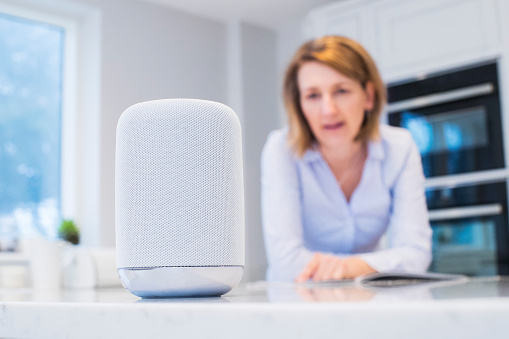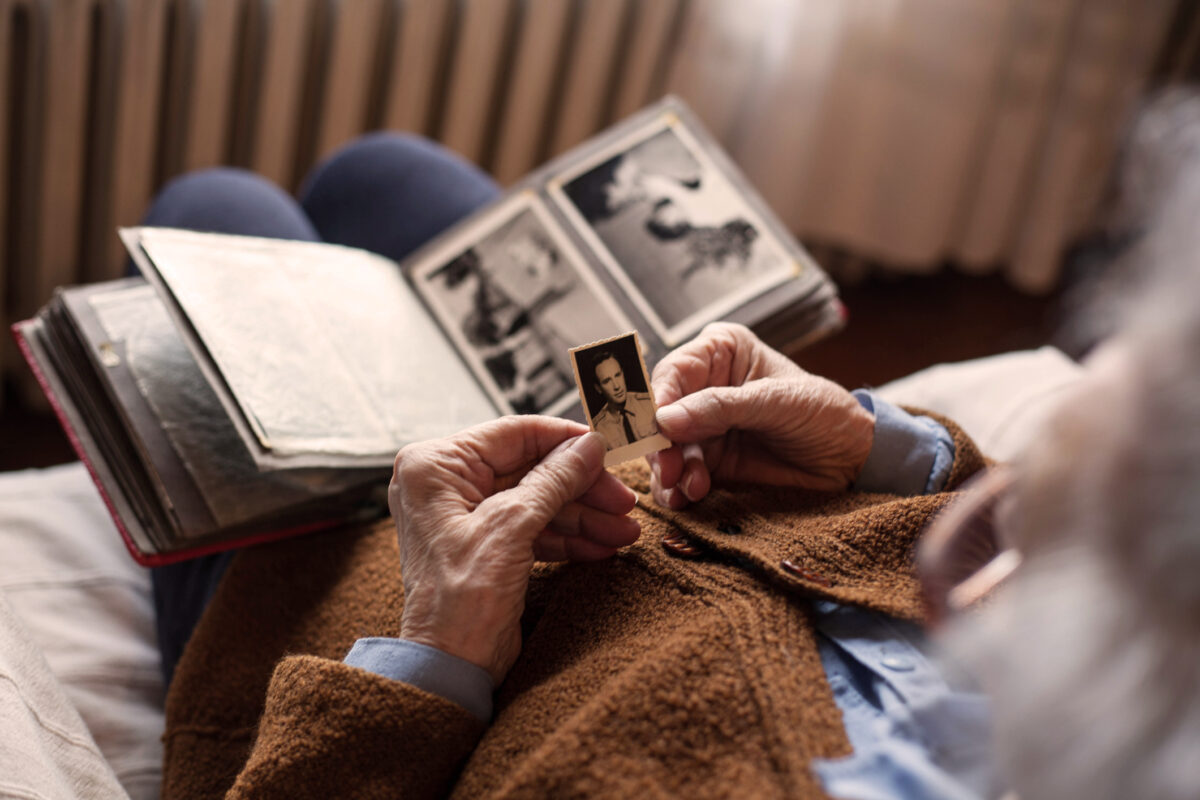Have you ever ordered Apple’s Siri around (“play Bruce Springsteen’s Badlands,” “find the nearest Starbucks”) or asked Amazon’s Alexa to give you the latest news? What about commanding Microsoft’s Cortana to speak up and tell you the weather next week for your visit with the grandkids or a meeting out of town?
Or, perhaps you’ve spoken to Google Assistant to remind you to text Dad in twenty minutes. If so, you’re using voice-first technology. If not, it’s just a matter of time.
Still in its infancy, voice-enabled virtual assistant software is embedded in a device such as a smart speaker (Google, Amazon, Sonos, and others), watch, phone, TV, or laptop. It’s designed so that as long as you are connected to Wi-Fi, you can speak (not type, swipe, or tap) a question to these devices or issue a command.
“Voice-first technology is the most significant personal technology disruption since the introduction of the web browser,” says technology industry analyst Laurie Orlov, founder of ageinplacetech.com.
Voice-first couples voice capability with Artificial Intelligence (AI), a system of computers that can perform tasks and “think for themselves” based on your behavior and preferences, algorithms, and data—which before only humans could do. This can range from completing a sentence in a text or getting directions, to recognizing someone at the door or instantly translating from one language into another.
Hear This About Voice-First Tech
According to recent research by Adobe Digital Insights, the most popular uses for voice assistant tech are listening to music (61%), checking the weather (60%), asking fun questions (54%), and doing research (53%). Voice assistant sales grew 103% year over year in the fourth quarter of 2017.
Speaking of statistics:
- By 2022, experts estimate that 55% of all U.S. households will have at least one voice assistant smart speaker (with the total number of installed devices estimated to be more than 175 million).
- 22% of people who own Amazon Echo and Google Home shop by voice. They ask Amazon’s Alexa or Google Assistant to do the same searches you would ordinarily type into your browser or smartphone.
In the near future, through voice-first technology, we will adjust the controls in our car and, already, many of our home appliances and other things (thermostat, lights) let you talk away. If you also have smart appliances, you can ask Google Assistant to preheat the oven, for instance, or how much time is left to finish the clothes in the washing machine.
In some hotels, guests don’t have to get out of bed to close their curtains or turn off the lights; they just ask Alexa to do their dirty work.
Another major area impacted by voice-first technology is healthcare. Already, the Boston Children’s Hospital’s Immersive Design Systems (IDS) in several Massachusetts hospitals teaches parents how to clean a central intravenous catheter, and operating room (OR) doctors use voice technology to document images from certain procedures. It can also help OR nurses with critical checklists.
Voice-First Technology for Older Adults
Older adults can derive great benefits from voice-enabled virtual assistant devices. For people with mobility or visual issues, an illness, or other physical challenges, these devices can be especially effective. You don’t have to walk across the room to turn on the lamp, lower the music, or find your favorite TV program.
They’re a time-saver for active adults, too. You might ask for directions to the nearest walking trail or about the traffic on your route to work.
How about those who think older adults are tech-phobic? Experts say if it’s easy to use, helpful or entertaining, and affordable —the Echo Dot sells for around $40—older adults will adopt it.
Just ask Front Porch Center for Innovation and Wellbeing, the research and technology arm of Front Porch, a company that runs retirement and care communities in five states. The Center gave 15 Echo devices to residents of the Carlsbad By The Sea community in Carlsbad, California. Twelve more residents bought them on their own.
The residents use them to turn on living room lights, adjust thermostats, as an intercom, and to make calls, among other things. John Sanders, 80, the community’s resident technology chair, thinks “its most important value has been as a friend. You don’t have to type to get a definition and you can ask it to play games.”
Sanders estimates that two-thirds of the Carlsbad By The Sea Front Porch residents own a voice assistant device.
“Voice-first technology and its evolving capabilities empower older adults to remain engaged with their environment, receive valuable services, and stay connected to their family and social networks,” says Heidi Culbertson, CEO of Marvee. Her company offers Alexa skills and other online training to older adults and their caregivers.
Marvee was the name of Culbertson’s mother, who at age 90 became blind from macular degeneration. “Mom’s blindness brought with it diminishing independence and increased isolation, loneliness, and family care,” says Culbertson. In 2014, when the Amazon Echo first came out, she bought one for her mother, hoping it would entertain her. “It completely opened up her world again and the delight was immediate,” she recalls.
Through Alexa, Marvee offers simple personal alerts—like sending a daily “I’m okay” notification to loved ones—and family messaging. By the end of the year, it expects to add additional features and capabilities. In May 2018, they launched Marvee Academy, an online training resource for older adults and family caregivers.
Voice-first technology is making life easier for people of all ages. “We are on the front end of a revolution,” predicts Sanders, the retirement community resident. And, if you’re still not sure you understand this tech, you’re in luck: Alexa or Siri will be happy to help you.
READ MORE: 15 Gadgets to Make Your Home Smarter






